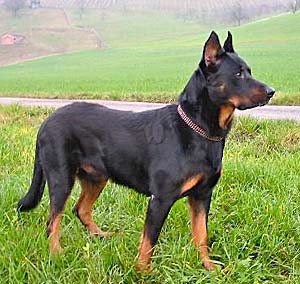

Dogs
The Norwich terrier is one of the smallest of the working terriers. These dogs look very similar to the Norfolk terrier, except for their ears and a few other characteristics.
The Norwich terrier originated in England in the late 1800s to control the vermin population and hunt foxes. It is thought that hunters in England bred small red gypsy dogs with the Yorkshire terrier, cairn terrier and some small Irish dogs.
Originally, the Norwich terrier and Norfolk terrier were two varieties of the same breed, one with erect ears and one with drop ears. They were both referred to as Norwich terriers. In 1964, the prick ear version was recognized as the Norwich terrier by the English Kennel Club. Eventually, other differences developed between the breeds and it is no longer true that the only difference between the breeds is the ears.
In 1979, the Norwich terrier was recognized by the American Kennel Club as a member of the terrier group.
The Norwich terrier and the Norfolk terrier have a very similar appearance, except for the ears and body shape. The Norwich terrier has erect ears and a more rounded appearance. The Norfolk terrier has drop ears. In addition, there are some differences in personality.
The Norwich terrier is one of the smallest working terriers. The breed is compact with a wedged shaped head, erect ears and a docked tail. The coat is wiry and straight, less than 2 inches long. The hair on the neck and shoulders is longer, forming a ruff. The Norwich terrier can be red, wheaten, tan, black and tan or grizzle.
The adult Norwich terrier stands around 10 inches at the shoulder and weighs about 10 to 12 pounds.
The Norwich terrier is a fearless and playful little dog. Loyal family companions, this dog is known as a demon for his size due to his seemingly constant activity. These dogs are quite courageous and will hunt small vermin with abandon.
The Norwich terrier is a great family dog that does well in the city or country. The breed can do well with children if introduced to them at an early age. This terrier is very protective of his family and will bark when strangers approach.
The Norwich terrier can live happily in an apartment as long as he is taken on daily walks. This breed can live with other pets but may chase household cats. In comparison to the Norfolk terrier, the Norwich terrier tends to enjoy spending more time with people than with other dogs.
The Norwich terrier is easy to train and can excel in obedience but can be difficult to housetrain.
The Norwich terrier does not like to be left alone with nothing to do. They are intelligent dogs and need mental stimulation to prevent destructive behaviors. As with other terriers, this breed tends to dig and bark if bored. This dog should not be allowed to roam off leash since he may chase small quick little creatures.
The Norwich terrier is a hardy breed that has few known diseases. The most common are:
Heart murmurs An unusual heart sound which may or not reflect disease.
Atopic dermatitis a disorder of the skin.
Epilepsy a disorder characterized by seizures.
Progressive retinal atrophy a disease that causes nerve cells at the back of the eye to degenerate, leading to blindness.
The average life span of the Norwich terrier is 12 to 15 years.
We realize that each dog is unique and may display other characteristics. This profile provides generally accepted breed information only.
 Norwich Terrier
Norwich Terrie
Norwich Terrier
Norwich Terrie
 Akita
Akita
Akita
Akita
 Affenpinschers: A guide to dogs and puppies of the Affenpinscher breed
The Affenpinscher!
The Affenpinscher (or “Affen”
Affenpinschers: A guide to dogs and puppies of the Affenpinscher breed
The Affenpinscher!
The Affenpinscher (or “Affen”
 Estrela Mountain Dogs: A guide to dogs and puppies of the Estrela Mountain Dog breed
The Estrela Mountain Dog!
The Estrela Mountain Dog is said
Estrela Mountain Dogs: A guide to dogs and puppies of the Estrela Mountain Dog breed
The Estrela Mountain Dog!
The Estrela Mountain Dog is said
 Beauceron
Beauceron
Beauceron
Beauceron
Copyright © 2005-2016 Pet Information All Rights Reserved
Contact us: www162date@outlook.com